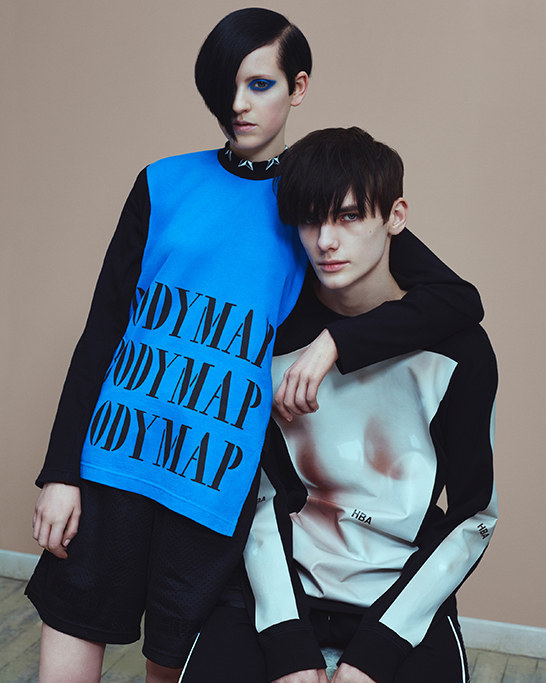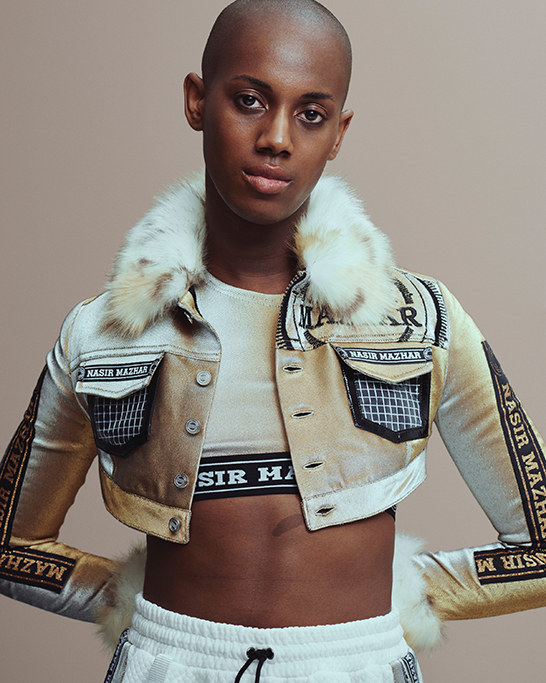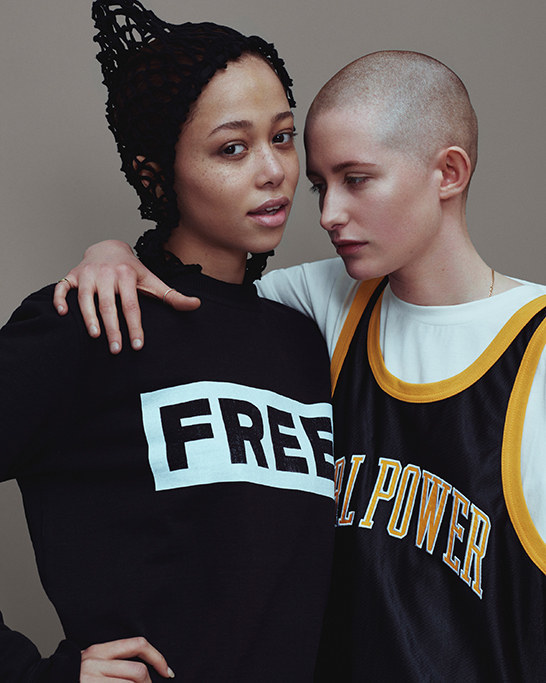“The gender stereotypes that exist are outdated expectations left over from generations past,” wrote i-D’s Ger Tierney in Imagine There’s No Gender, It’s Easy If You Try. Presentations of these archaic stereotypes are still at every turn across society, whilst the pressure to feel, behave and look a certain way to be considered “a man”, or “a woman,” still bears down on us all. However, these presentations and pressures are so archaic that they’re beginning to crumble. From sign up forms for social media to gender neutral bathrooms, perceptions are beginning to shift. One of the clearest changes has been with Facebook. Up until last year, the platform of pure procrastination only recognized the gender binary. Now if you don’t fit into any of the fifty eight gender identity options they introduced twelve months ago, they’ve just added a fifty ninth, fill in the blank. Today, users no longer have to squeeze themselves into ill fitting classifications, they finally have control. Despite increasing awareness that gender is not a simple either/or, fashion and retail have, up until now at least, being marketed along those lines. What would a genderless retail experience entail? With the launch of Selfridges’ Agender and thecorner.com’s No Gender, imagine no more, they’re here. Retail projects are finally edging fashion forward to reflect the realities of the way we live now and the distinctive line between men’s and women’s is fading.
Two years in the making, Selfridges launched Agender with an original film directed by Selfridges’ Resident Film Director Kathryn Ferguson and Alex Turvey. With a cast led by actor and model Hari Nef and a performance choreographed by artist Ryan Heffington, the conversation it started around gender fluidity and non-binary ways of being, was brought to life in the unique creation of a genderless in-store shopping experience. Devised by renowned designer Faye Toogood, The Concept Space, is an environment in which customers are given the freedom to transcend notions of ‘his’ and ‘hers’, the focus is on the product and all other distractions are muted. After the space opened its doors last week and a number of launch events exploring this scheduled for this week and beyond, we caught up with Faye to discuss this brave new world.

Since I’ve read that Agender is two years in the making, did your debut Toogood collection first open the discussion with Selfridges?
I think my collection and launch of the Toogood brand was timely for Selfridges. I started making clothes with my sister for our friends – artists; designers; architects and creatives who did not want to wear heavily branded fashion labels. Who wanted to be able to buy something seasonless; unbranded; genderless and anonymous to a certain extent. The collection opened the discussion with Selfridges and over the last two years it has been clearer and clearer that this is an issue for not just designers like me, but their customers: the way we choose to present ourselves as individuals shouldn’t be constrained by the artificial divisions of society or commerce.
As we’ve all become more aware that gender isn’t binary, how have opinions shifted to fashion and retail?
I think for some time we have all understood that gender is not binary but we have not reflected this in the way we present ourselves. It is not simply about dressing in an “androgynous style” or in unisex boiler suits as many fashion magazines put it: a man wearing a skirt or a woman wanting to wear her boyfriends jeans. This is a genuine desire by men and women to dress as individuals in whatever they wish. Presenting clothes on racks for men and women is outmoded.
By their very construction and focus, department stores segregate, not just by rail but by floors. How difficult was it to craft a space within Selfridges that was free from the need to conform and categorize?
It was a challenge. I firstly managed to persuade the directors to use the materials I wanted to use – primal and raw materials like chickenwire; steel; hair; rubber; etc. However once I had convinced them on chickenwire structures filled with primal figurative sculptures I realized I was missing something. I was not changing anything – just designing another space, a new interior. I needed to change and challenge the way people actually shopped and looked for clothes. I wanted to remove all visual merchandising; remove all branding and all artifice behind gender. This is when I decided to bag all the clothes – this way I allowed the garments to speak for themselves.

Agender strips garments of gender but also of strips them of the most obvious creative and everyday distractions, the result of which is archival, neutral, clinical even. How conscious were of the need to sterilize the retail experience?
My Agender spaces are based on the idea of stripping away the artifice of commerce and marketing: they are designed in the shape of houses, to suggest a domestic space as opposed to the impersonality of a retail space, and rendered in steel mesh to add transparency. All of the garments are presented in pared-down, uniform packaging to free them from the preconceptions that would ordinarily color such purchases. It’s about creating a blank slate to explore the way we think about what we wear. To me, it feels exciting to be at the forefront of something that could fundamentally change the way people present themselves through clothing.
How would you like to see consumers interact with the space?
Visitors will need to work a little harder to find what they want to wear – its not presented in an easy-to-digest format. My aim was to change the experience of buying clothes – decide for yourself what is right for you.
Fashion (retail included) has the ability to reinforce or reimagine traditional gender constructs. How would you like to see fashion? Should it merely mirror society or can it/should it be more radical?
Fashion, like any art form has the ability to create change. Fashion has no single function – is has the ability however to provoke and comment. Agender literally means “without gender”, but it also suggests a plan of action or an ideological goal. This projects sets out an agenda to move fashion forward and to reflect the realities of the way we live now. Fashion is an industry that prides itself on being ahead of the curve, so naturally it’s important that it keeps pace with the progress we are seeing in society as a whole. The blurring of gender distinctions also gives designers greater freedom, with a much broader range of forms and silhouettes to explore.
In terms of tomorrow and beyond, what excites you most about blurring boundaries and gender fluidity?
It’s about a state of mind as much as it is about the clothes themselves. The whole point is that there are no longer any restrictions: wear whatever you choose, and don’t let society dictate what that should be.
Beyond toogood which designers/labels do you think are best adding to the discussion around gender?
Haider Ackermann, Yang Li, Loewe and Vetements. Obviously….Comme, Ann Demeulemeester and Hedi Slimane.

Finally, how would you like to see Agender influence the future of retail?
Agender is there to provoke and experiment; to ask and indeed answer some questions that we are all having about gender and what we wear now. Agender is not just about harnessing a “trend” but about responding to a cultural shift. Having said that, I certainly don’t think that all retail environments will be bagging and boxing their product, but I do think that they will have to acknowledge that there is currently shift in the marketplace.
I think the future would be for retailers to look past the arbitrary segregation of clothing. It is mapped out for us at a very early age, where the outmoded labels of blue and pink are still used to denote gender in the children’s departments.
How are Generation Z going to change the world? Find out here.
Credits
Text Steve Salter
Images courtesy Selfridges
